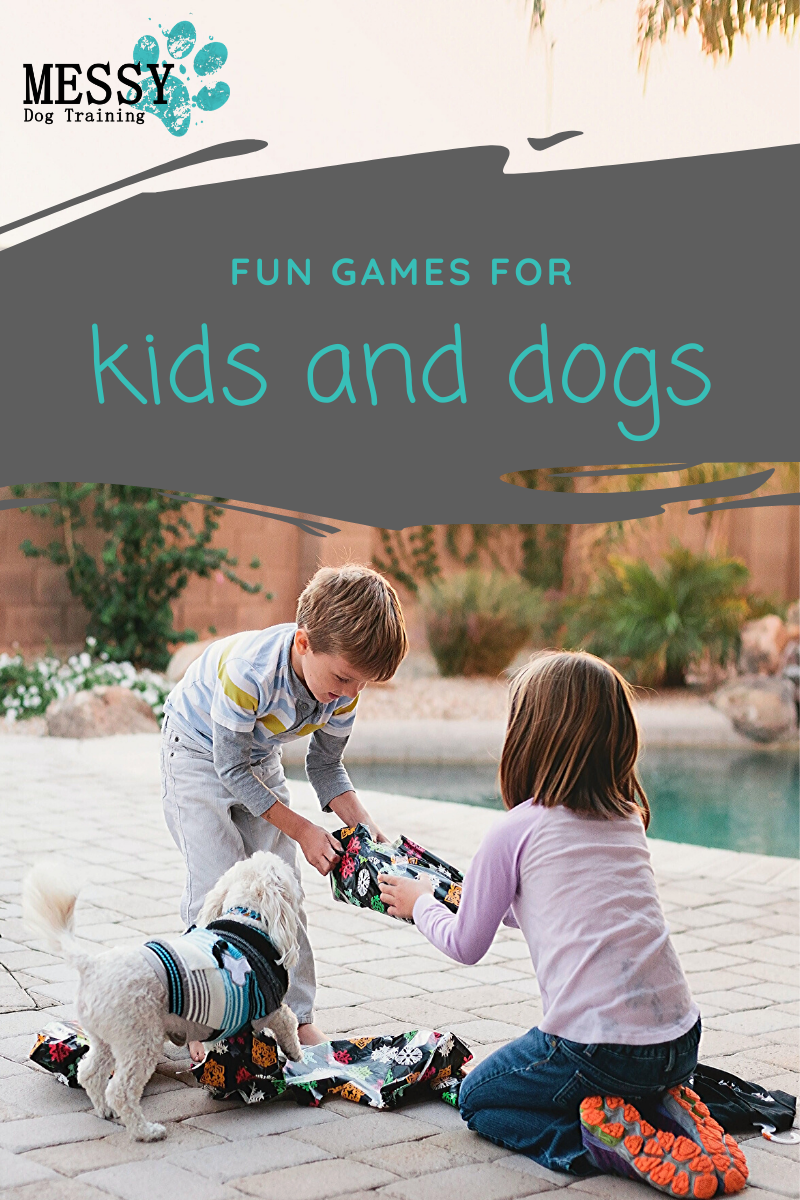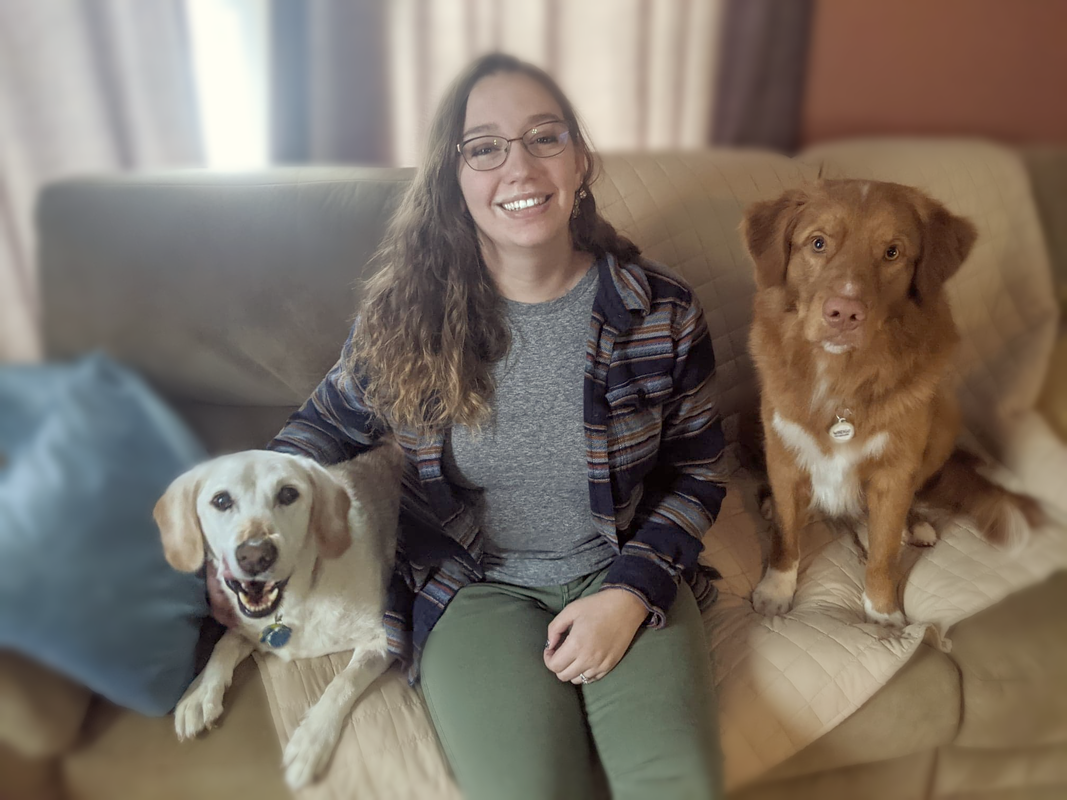|
We all want to have a happy and healthy dog in our lives - if you didn’t, you likely wouldn’t own one! As much of our lives as we spend with dogs, they are still a different species. What things can you do to help make your dog even happier?
1. Let Them Sniff Some of us are stuck in having a dog walk right at our side when we go on a walk. If this is you, consider what walking your dog is really for - it should be to benefit your dog, right? If we didn’t want our dog to get something out of the walk, we could just go by ourselves! There are absolutely ways to take our dog on a relaxing and controlled walk where they aren’t pulling us down the street, and they are still allowed to sniff and explore and engage that natural doggy part of their brain. One of my favorite ways to teach dogs to walk on a leash that allows them the freedom to sniff is to teach them to respond to leash pressure. Dogs often pull and pull HARD when they are falling victim to the opposition reflex. If I push you, you push your body back to try and keep your balance. The same happens when dogs pull on the leash. Instead, you can teach your dog that when the leash has tension, they should come back closer to you. This will let you vary the length of your leash based upon where you are letting your dog sniff in order to keep them safe and well mannered but also allow their sniffing. Not only is sniffing a natural dog behavior that our dogs love to enjoy (After all, they have a sense of smell about 100 times greater than ours. We smell chicken noodle soup, and they smell each ingredient!) but sniffing also lowers a dog’s blood pressure, according to recently published research. This means that this is especially important for hyperactive or worried dogs. Try letting your dog guide your walk. Let them sniff along the way, and let them stop and sniff if they find something extra appealing! Don’t make your goal the distance that you travel, but the time your dog gets to be out of the house and exploring. 2. Ask for Consent to Pet Did you realize not all dogs want your physical attention? Many dogs actually prefer to train or play or just be around you without hugs or pats. You can try a consent test to see what your dog prefers! The Pat-Pet-Pause protocol goes like this:
This protocol helps keep your dog happy by showing your dog that you listen to them and understand what they are telling you. You can help your dog even more by having other family members and friends, or even strangers follow the steps. 3. Let Them Destroy! Just like how sniffing is a natural dog behavior, destroying toys and shredding things can be natural for many dogs too. Giving them an outlet for this behavior is good for their happiness and mental health, but can also cut down on destruction that we don’t want. Cheap stuffed toys from the pet store or even old thrift store stuffed animals can be a great way to let your dog exercise their destruction desire. Your dog should be supervised and you should always make sure that your dog is not eating the stuffing or other pieces. Give your dog the toy, let them destroy it, and pick it up and toss is when they’re done. Some of my dogs still enjoy playing with the fabric that originally contained the stuffing, so I will just toss the stuffing and insides and keep the fabric pieces for them to play with as well. Other items that you can give your dog to shred and destroy include:
You can create a special place you always let your dog shred items in if you’re worried about it backfiring and increasing their desire to shred. Put the game on a cue, make sure you give the items to your dog using the cue, and then play the game for a specified amount of time in the same area each time you let your dog shred and destroy something. These boundaries will help your dog learn that they do get to destroy things - but only when it falls into a certain situation and rules! 4. Build a Dig Box Another natural behavior that dogs like to partake in is digging! It’s also a point of concern for many dog owners, if their dog is digging up the garden or the yard. Just like with shredding and destruction games, giving your dog an outlet for digging can minimize digging that we don’t want in addition to giving you a happier dog! Dig boxes can be outside or inside, and the size varies depending on your dog. Outdoor dig boxes might utilize wooden barriers or even a plastic kiddie pool filled with sand or dirt. If you are wanting to make an indoor dig box, shredded paper or fabric scraps will still let them dig around and burrow. You can hide treats and toys in dig boxes to encourage your dogs to use them. For the tiniest of dogs, even a cat litter box might work well to create a dig box that is easy to clean and refill. If you are using a dig box to redirect behavior you don’t like, hiding treats and toys will encourage them to dig in the newly designated location. In addition, when you catch your dog wanting to dig somewhere you don’t want a hole, you can move them to their dig box and encourage them to dig there. Happy adventures on improving your dog’s happiness! What are some of your dogs favorite things to do? What do you do to keep your dog happy?
0 Comments
Kids and dogs go together like peanut butter and jelly, right? In truth, the right kids and dogs can be the best of companions, but some may need more guidance than others when it comes to learning how to interact. Follow along below for some fun ideas that your dog and kids can play together to further their bond in a safe and fun way! 1. Hide and Go Seek
This game is my FAVORITE because not only is it so much fun for all parties involved, but it’s an excellent way to practice your dog’s recall at the same time! You can never have too much practice with a recall, plus it’s a great way to tire out your dog in the winter months. Give each kid involved a pocket full of treats or kibble. This game works best with multiple youth (or you can join in, too) so that someone is available to hold or occupy the dog. Start with one person hiding and one person holding the dog. When the person has hidden, they should then begin to call the dog in a fun, loud, and excited voice. Have them keep calling and talking until the dog has found them, and then instruct them to reward the dog. Once they have finished their reward and are ready for the next person, they can call out “OK, ready!” so the next person knows to call the dog. While the 2nd person is calling the dog, the 1st person can then hide again and the process repeats. If there are more than 2 people playing, just set a schedule ahead of time. Oldest to youngest, or alphabetical, can be ways to decide the order of who is calling the dog next. 2. Teaching a New Trick Training in and of itself can be a great way to have kids and dogs interact in a safe manner. For older children, they are often able to train the dog themselves with minimal guidance from adults once they have been taught. It’s still a good idea to supervise, however, because youth are not as capable of controlling their feelings and dogs can definitely be frustrating! Use training as an opportunity to help the youth grow and learn, in addition to just the dogs. Younger kids can still help out in training. Some considerations are to have them give treats once they hear the click or marker word (this gives you the ability to control the marking, which can be the difficult part of some behaviors). If you are working on a simple behavior, such as a hand target, some youth can also participate by watching for the dog’s nose to touch your hand. They can then operate the clicker and you can give the rewards yourself. Ideas for things to teach with kids and dogs include:
Some of these behaviors come in handy for kids to know, too! Back up in particular can be useful if there is a larger dog and the kid is looking for space to walk by the dog. Rather than physically moving the dog and risking a potential altercation, they can ask the dog to move out of their way. 3. Find the Treat This game is great for energetic dogs, because not only does it give kids a way to interact with dogs safely, it also gives dogs an opportunity to use their amazing nose! Dogs have a sense of smell about 100 times better than ours. Sniffing also lowers their blood pressure and engages their brain in a way that’s much more tiring than just a walk. To start this game, make the treat hides easy for the dog. I like to start with one room that the treats are in, and ask the dog to stay out of sight or shut them in a room until the treats are hidden. Some easier hide examples include putting treats on the opposite side of piece of furniture but in the open, or putting a treat near a table leg but not actually hiding it out of sight. As your dog learns what “find it!” means, you can start to gradually make the hidden treats harder and harder. Harder hides might mean putting the treat under the edge of a couch cushion or even working higher, like on the edge of a TV stand. Use your imagination! Starting with smellier treats and progressing to less smelly treats is another way you can increase the difficulty. Let your kids hide the treats (help them with difficulty if they can’t decide what is too hard or too easy for the dog on their own) and then encourage them to cheer and play along once your dog has found the treats! 4. Fetch Fetch is definitely a case of knowing your dog - it might not be ideal if you have a dog that gets over aroused during fetch and might accidentally nip a child’s hand or knock them over. However, if you have a dog with good fetching manners, this can be a fun classic game for kids and dogs to play. Good rules of fetch include a dog waiting politely for the ball to be thrown (either nearby or running off and waiting, that choice is up to you!) instead of jumping at the ball. Dogs should also have a solid drop it so that kids don’t have to reach into the dog’s mouth. I like using a tool like the Chuck-It! in these cases, because it gives kids the ability to throw longer and harder than normal, but also gives them a way to pick up the ball without putting it in their hands. Even the most well-behaved dog might accidentally try and grab a ball out of a child’s hand, which can be a scary experience for some kids! 5. Obstacle Course Finally, teaching your dog a few simple cues of “up” and “off” and “through” can open up a wide variety of potential obstacles for kids and dogs to play with! You don’t need an official agility course just to have some fun. Keep your dog’s health in mind first and foremost. Don’t ask them to jump too high or to exercise too much, especially if they are recovering from an injury or overweight. If you have questions about your dog’s ability to safely engage in an activity, check with your dog’s veterinarian. Some fun obstacles to play with include:
Use your imagination with what you have around you! Some dogs prefer different types of obstacles, so see what your dog loves best and have fun showing youth how to safely interact with the dogs and obstacles. What games have you played with kids and dogs? |
MESSY Dog Blog
What do you want your dog to do? We can help you train it! Categories
All
Archives
May 2020
|
Helping dogs and their owners achieve their goals since 2016
Currently serving owners in the Cedar Falls, IA area and online.
Currently serving owners in the Cedar Falls, IA area and online.


 RSS Feed
RSS Feed
